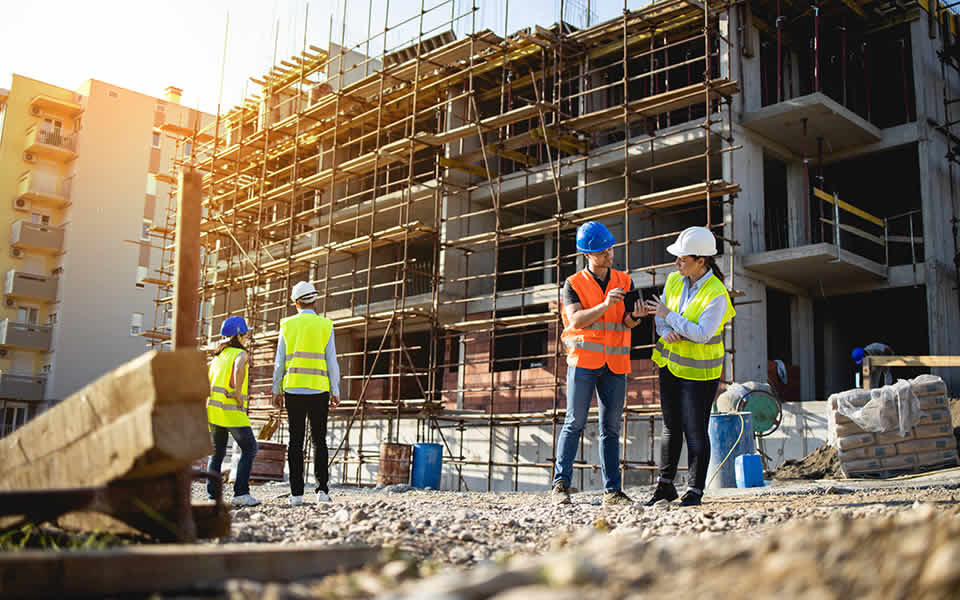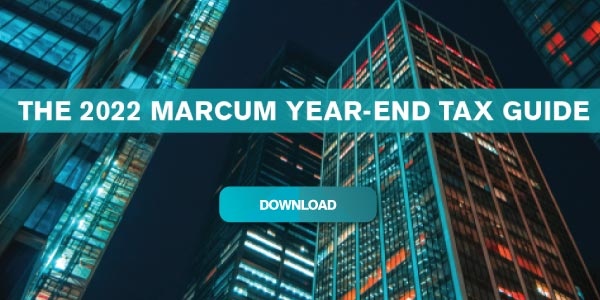Expanded Credits and Deductions for Construction and Real Estate Industries
The Inflation Reduction Act of 2022 (the Act) is intended to focus on energy, tax and health policy. The Act has implications for the real estate and construction industries, with expanded and new green building tax incentives under Section 179D of the Internal Revenue Code.
Generally, the 179D commercial buildings energy tax deduction enables owners to claim a tax deduction for installing qualifying systems up to a certain dollar amount per square foot, when making efficiency improvements above certain energy thresholds. This deduction was meant to help offset some of the high costs of energy-efficient components and systems installed in commercial buildings.
Starting in 2023, deductions will be available for buildings that improve energy efficiency by 25% — a much more attainable target than the previous 50% threshold. Moreover, the deduction amount increases for every percentage point of energy efficiency above the 25% benchmark. Qualifying construction and improvement projects can earn an additional deduction of up to $5.00 per square foot if they meet prevailing wage rates for the area and minimum apprenticeship requirements. Construction projects started prior to January 1, 2023, require at least 10% of the total construction hours be performed by “qualified apprentices in a registered apprenticeship program.” The minimum percentage increases to 12.5% for projects started in 2023 and to 15% for projects started in 2024.
Retrofits may qualify for an alternative Section 179D deduction if placed into service under a qualified retrofit plan and show at least a 25% decrease in energy usage when compared to the usage five years prior.
In one of the biggest impacts of the Act, tax-exempt building owners, such as nonprofits and tribal entities, will now be able to allocate deductions to the architects, engineers and building design contractors primarily responsible for designing the specific building energy efficient systems.
Changes to §179D Deduction
| 179D Provision | Existing Law (PIS Date Before 1/1/2023) | IRA Changes (PIS Date After 12/31/2022) |
|---|---|---|
| Maximum amount of deduction | $1.80 times square footage, subject to cost-of-living adjustment | Up to either $1.00/SF or $5.00/SF. The applicable dollar value times the square footage, subject to cost-of-living adjustment. The applicable dollar value is equal to $0.50, increased by $0.02 (but not above $1.00) for each percentage point by which the total annual energy and power costs for the building are certified to be reduced by a percentage greater than 25 percent. These amounts are increased from $0.50 to $2.50 and from $0.02 to $0.10 for any energy-efficient commercial building property, energy-efficient building retrofit property, or property installed pursuant to a qualified retrofit plan, if certain apprenticeship and prevailing wage requirements are met. |
| Energy efficient commercial building | Property certified as having reduced the energy and power costs of the building by 50% or more in comparison to a reference building | Property certified as having reduced the energy and power costs of the building by 25% or more in comparison to a reference building |
| Reference building standard | The most recent ASHRAE Standard 90.1 affirmed by the Secretary not later than the date 2 years before construction begins | The most recent ASHRAE Standard 90.1 affirmed by the Secretary not later than the date 4 years before such property is placed into service |
The Act also makes changes to the Section 45L tax credit, which has been in place since 2006 and was enacted to incentivize residential home builders and developers of multi-family residential apartment complexes to construct energy-efficient homes and apartments. Currently, the credit provides a $2,000 credit for homes meeting certain energy efficiency requirements. Beginning January 1, 2023, the maximum credit for 45L will increase, with new tax credits ranging from $2,500 to $5,000 per single-family home and $500 to $5,000 per multifamily dwelling unit.
Changes to §45L Credit
| Home Type | Efficiency Standard | Base Credit | Bonus Credit |
|---|---|---|---|
| Single-Family | Energy Star Single-Family | $5,000 | N/A |
| Net Zero Single-Family | DOE Zero Energy Ready | $2,500 | N/A |
| Manufactured Homes | Energy Star Manufactured Homes | $2,500 | N/A |
| Net Zero Manufactured Homes | DOE Zero Energy Ready | $2,500 | N/A |
| Multifamily Units | Energy Star Manufactured Homes | $500/unit | $2,500/unit |
| Net Zero Multifamily | DOE Zero Energy Ready | $1,000/unit | $5,000/unit |
Building owners and construction contractors need to start planning now to maximize these incentives for 2022 and the expanded benefits for 2023 to ensure all opportunities are explored.




















